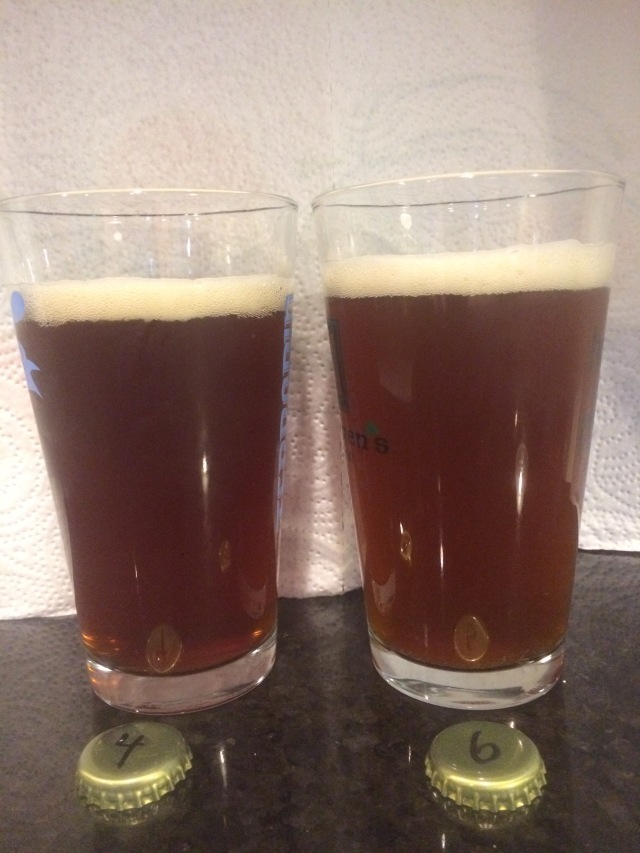This post is one in a series of making small adjustments to a single recipe in order to improve it, learn more about the impact each ingredient has on the finished product, and the art of recipe creation. The rest of the comparison tastings in this series can be found here.
Although Iteration 4 of this red IPA was prior to finding the malt bill that I like, it is still enjoyable and (I think) worthwhile to remind myself how certain flavors expressed themselves with this version of the recipe as compared to Iteration 6. Even though these two versions have different malt bills and different hop schedules, they are still only two steps removed from one another, and seeing only one change in malt and one change in hops proves that it doesn’t take much to make two very different beers.
Recap
The differences between versions 4 and 6 of this recipe were as follows:
- Iteration 6 had 1.05 lbs. more malt total than Iteration 4.
- Iteration 4 used 1 lb. of Dark Munich and Iteration 6 used 1 lb. of Vienna
- Iteration 4 had one ounce more Crystal 120 than Iteration 6.
- Iteration 6 was 1.85% higher in alcohol than Iteration 4 due to a 14-point difference in OG (1.066 and 1.052, respectively), although both had the same FG (1.010).
- The hop schedule for Iteration 6 used magnum at the 60 min. mark instead of Simcoe.
- Iteration 6 used Simcoe at flameout.
- Iteration 6 used 0.5 oz. more dryhops than Iteration 4 (adding Simcoe as a dry hop).
Appearance
Both beers were amber in appearance, although Iteration 6 was slightly lighter in color. Both poured with a moderate head and had decent retention. While I did not notice it at first, I did notice about halfway through my glass of Iteration 4 that it had finally dropped clear and lost the haze that has plagued each one of these beers.

Aroma
Iteration 4 had floral notes, paired with cherry and plum. Iteration 6 smelled strongly of citrus but still allowed for the same plum scent from the malt to come through.
Flavor
Iteration 4 tasted bready. Although this was the most prominent flavor, plum and floral notes were also present. Iteration 6 tasted of cherry, plum, and citrus, but it also had a distinct hint of dankness to it (thanks Simcoe).
Final Thoughts
I was really excited to see Iteration 4 had dropped clear; however, I was also perplexed. Why did it drop clear after three months? Why didn’t the other versions of this recipe drop clear after that length of time? The more I thought though, I began to realize that I hadn’t noticed the beer being bright when I poured it. After I had finished my tasting notes, I leisurely drank these two pints, drinking Iteration 6 first as it was my preferred version. The time it took to get to Iteration 4 makes me wonder if the beer had warmed up enough and if what I’ve been seeing this whole time has been significant chill haze. I have yet to explore this hypothesis (mostly because I’ve been too impatient to let a beer just sit there after I poured it and because I didn’t particularly want to pour a bottle that hasn’t been in the fridge, then being forced to drink a warm beer), but it’s something I’ll certainly put to the test soon.
I’ve already mentioned that Iteration 6 was my beer of choice between these two. The biggest difference, though, was how certain flavors expressed themselves. The dark fruit flavors of cherry and plum shine through in Iteration 6, whereas in Iteration 4, although these flavors are present, they are duller. (The beer itself does not have a dull flavor, but these particular dark fruit flavors are more muddled.) I believe this is due to the bready character of the Munich malt being dominant in that iteration. Whatever the reason, though, Iteration 6 proves that this beer is headed in the right direction.
